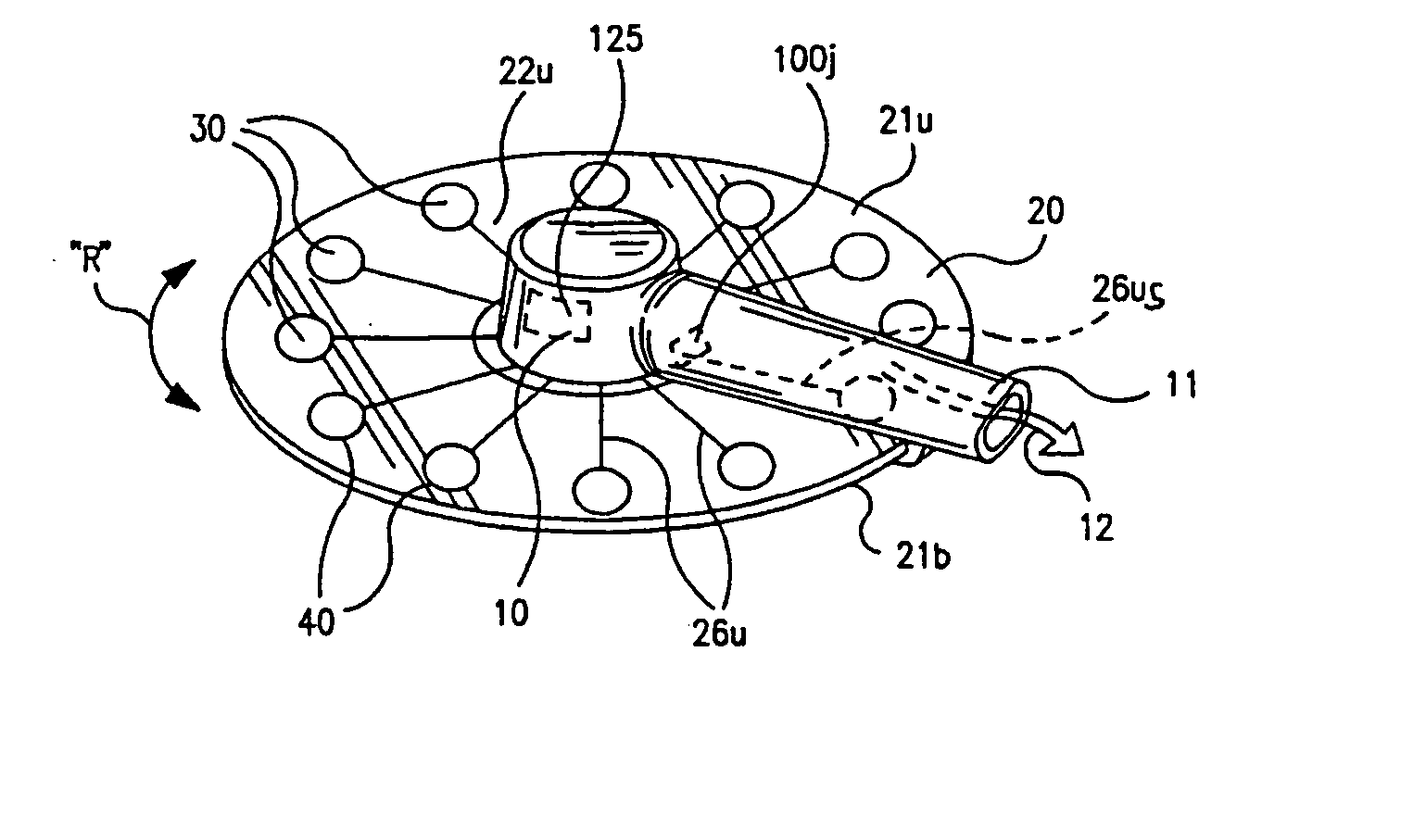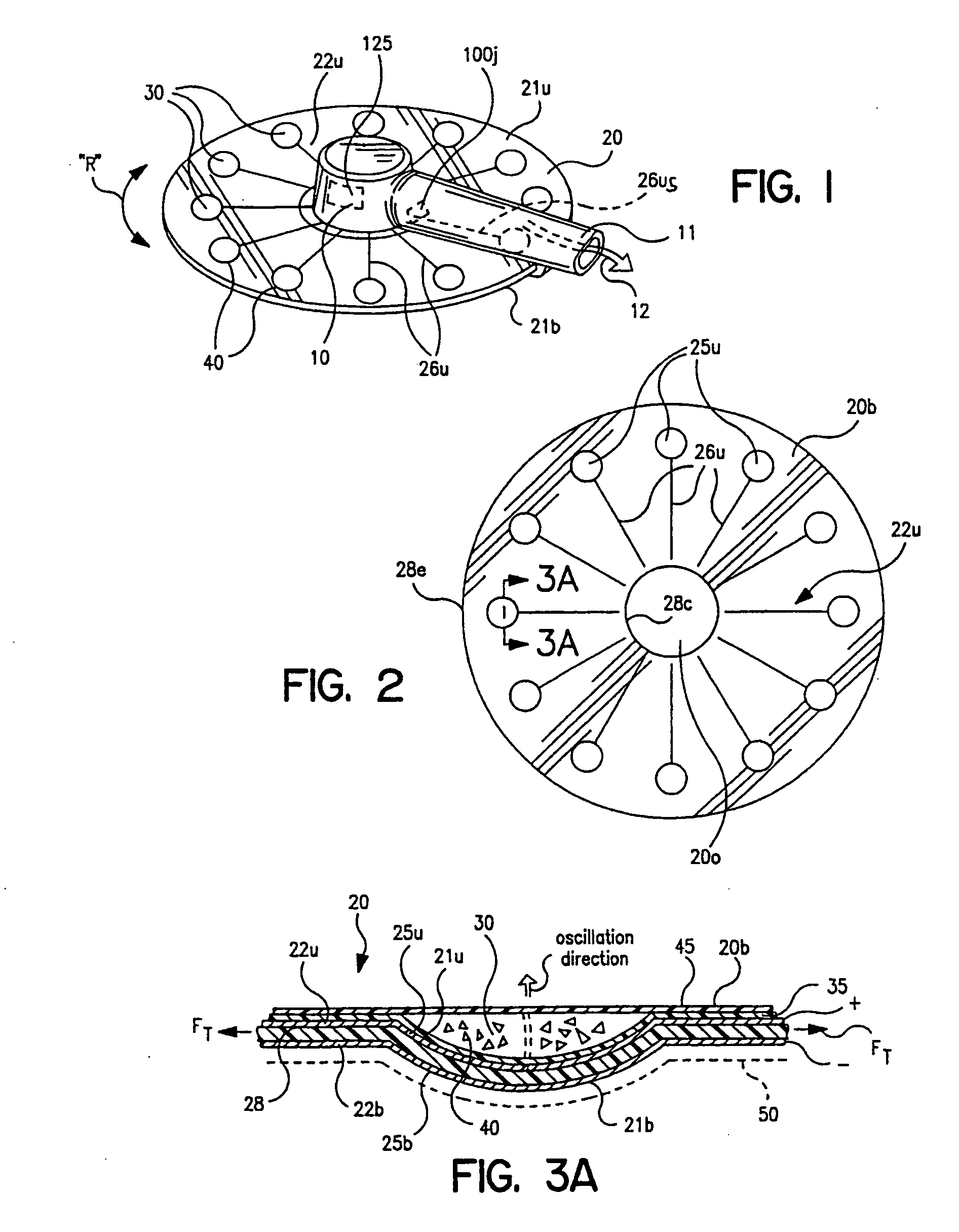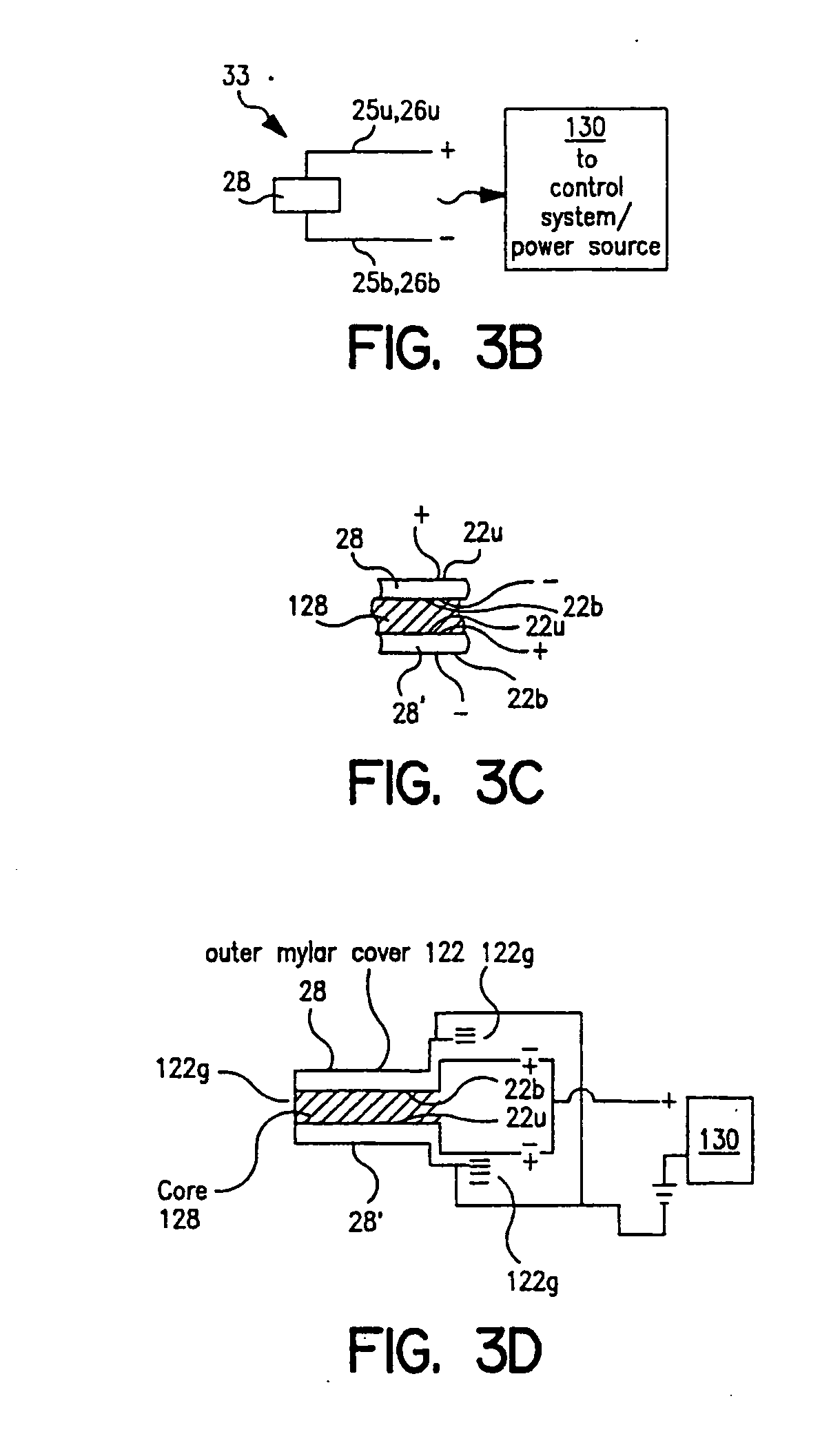Dry powder inhaler devices, multi-dose dry powder drug packages, control systems, and associated methods
a technology of dry powder inhaler and control system, which is applied in the direction of packaging, other medical devices, coatings, etc., can solve the problems of limited clinical use of nebulizer-type devices, difficult reformulation, and large number of non-cfc, so as to reduce the chance of accidental multiple dosing, improve operational characteristics, and improve reliability and uniformity
- Summary
- Abstract
- Description
- Claims
- Application Information
AI Technical Summary
Benefits of technology
Problems solved by technology
Method used
Image
Examples
example
[0131] An experimental embodiment of a DPI employing a piezoelectric excitation element for vibrating the powder during dispersion employs a design wherein the polymer membrane vibratory element has an associated capacitance “C” of about 1800 pf. The capacitance value corresponds to the size i.e., area (and thus shape) of the blister or vibratory element. The transformer used to step up the 5Vp-p input voltage is presently exhibiting an inductance of about 23 mH on the secondary side. The transformer is used to step up the voltage to a 150Vp-p excitation voltage to the blister. Thus together, the transformer and piezoelectric element define an amplifier which can be described as having a resonant frequency expressed by the equation:
f=1 / (2π(LC)1 / 2)
where “L” is the inductance of the transformer and C is the capacitance of the polymer membrane vibratory element. This yields a calculated resonant frequency for the experimental embodiment of about 25 kHz. The resonant frequency determ...
PUM
 Login to View More
Login to View More Abstract
Description
Claims
Application Information
 Login to View More
Login to View More - R&D
- Intellectual Property
- Life Sciences
- Materials
- Tech Scout
- Unparalleled Data Quality
- Higher Quality Content
- 60% Fewer Hallucinations
Browse by: Latest US Patents, China's latest patents, Technical Efficacy Thesaurus, Application Domain, Technology Topic, Popular Technical Reports.
© 2025 PatSnap. All rights reserved.Legal|Privacy policy|Modern Slavery Act Transparency Statement|Sitemap|About US| Contact US: help@patsnap.com



